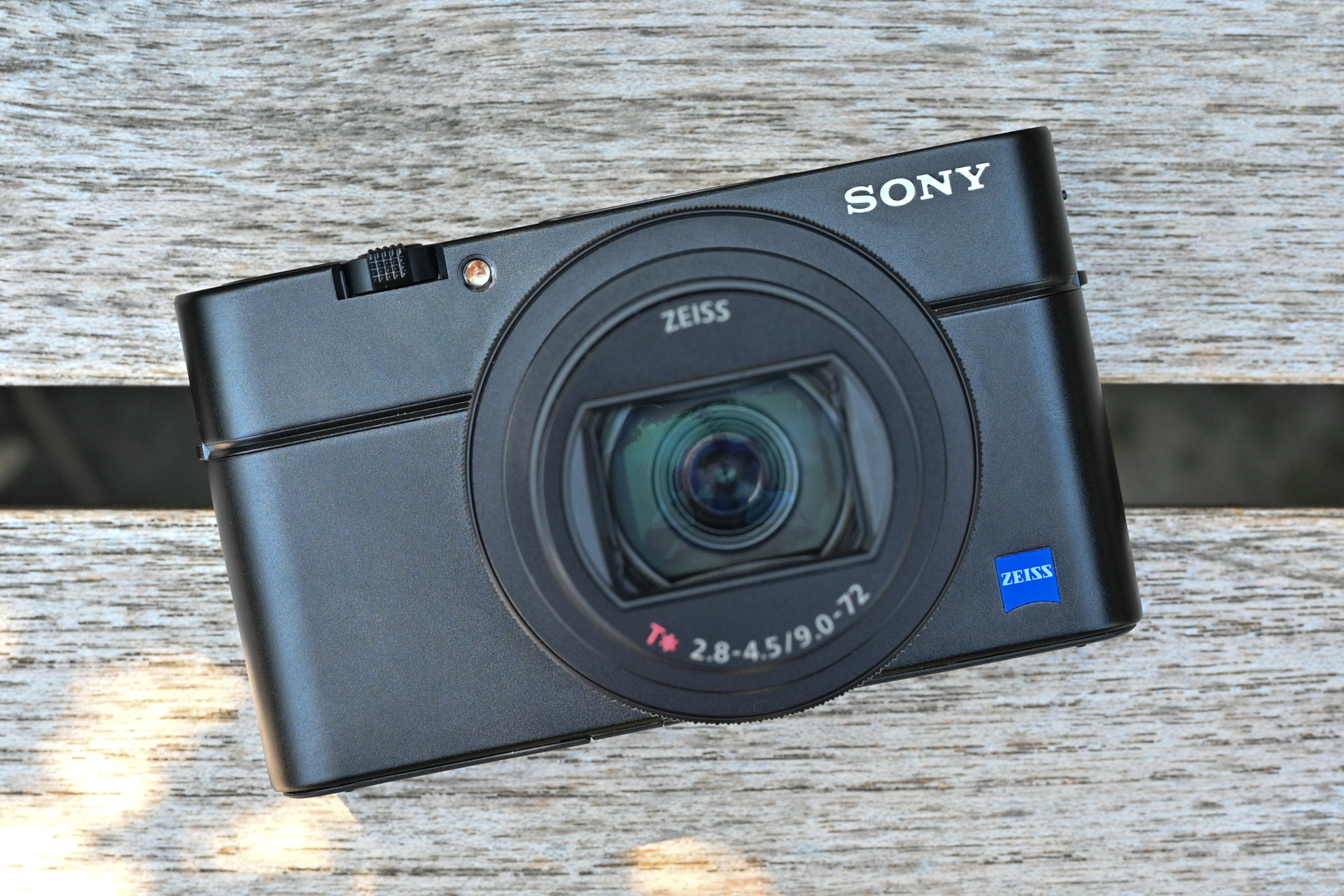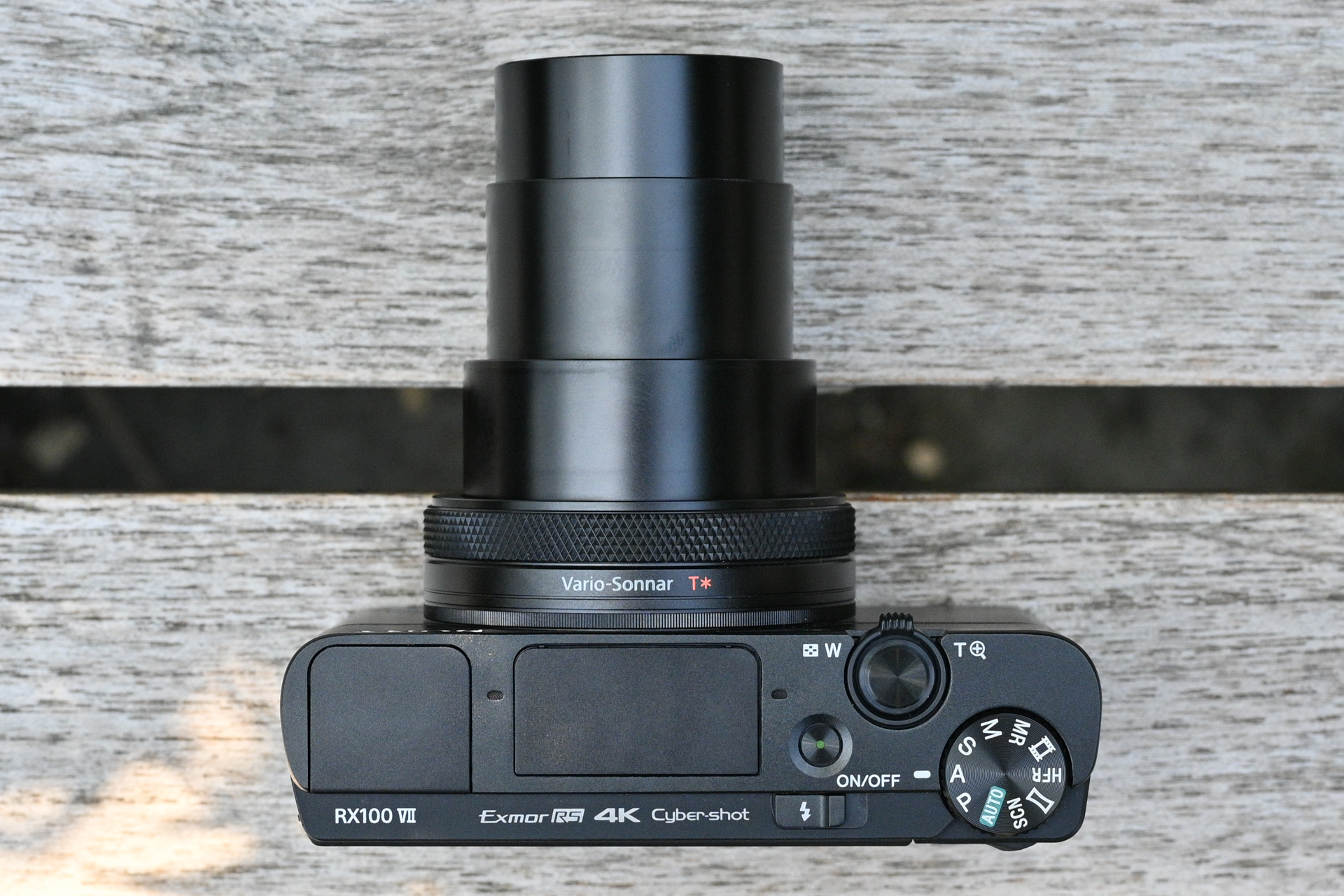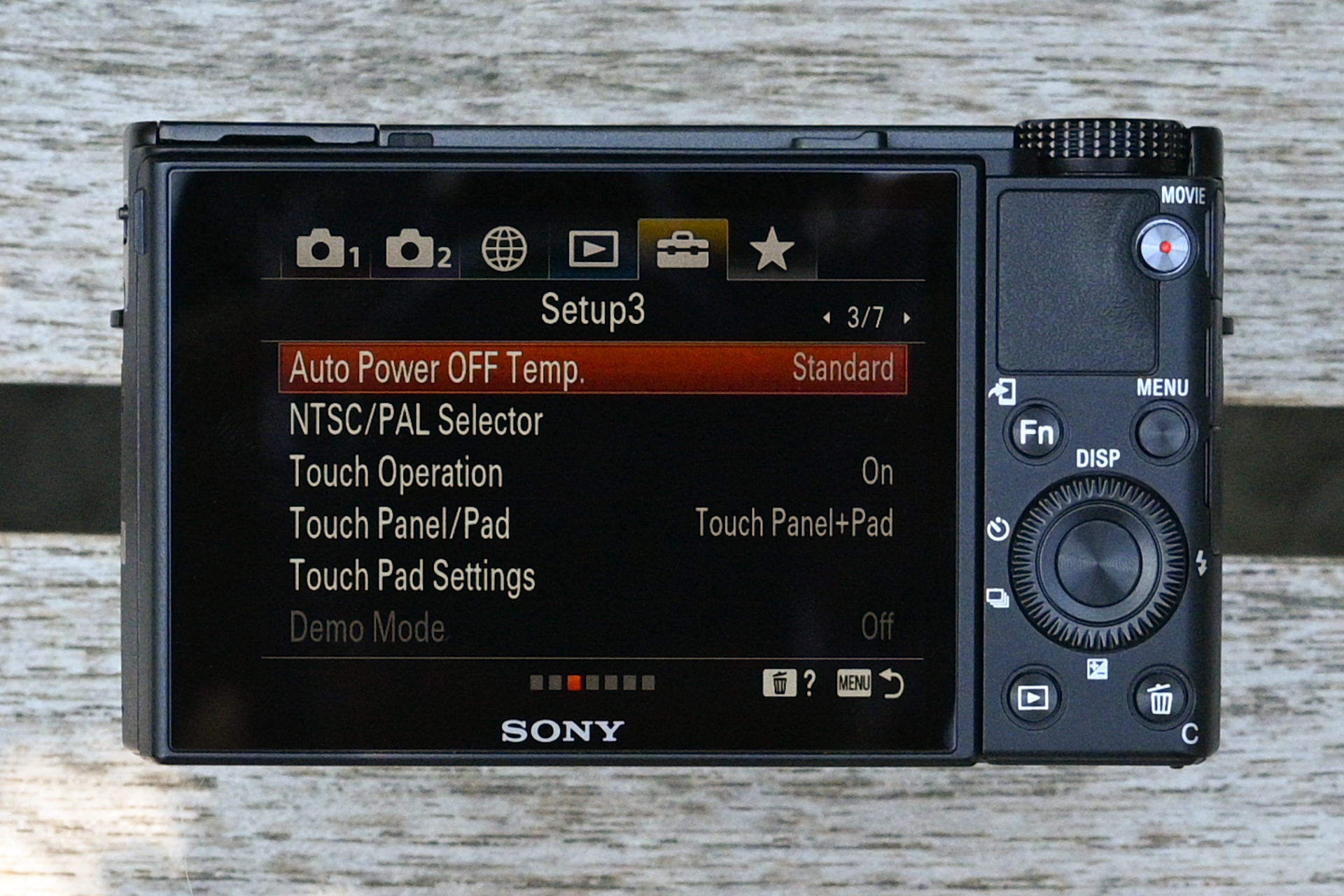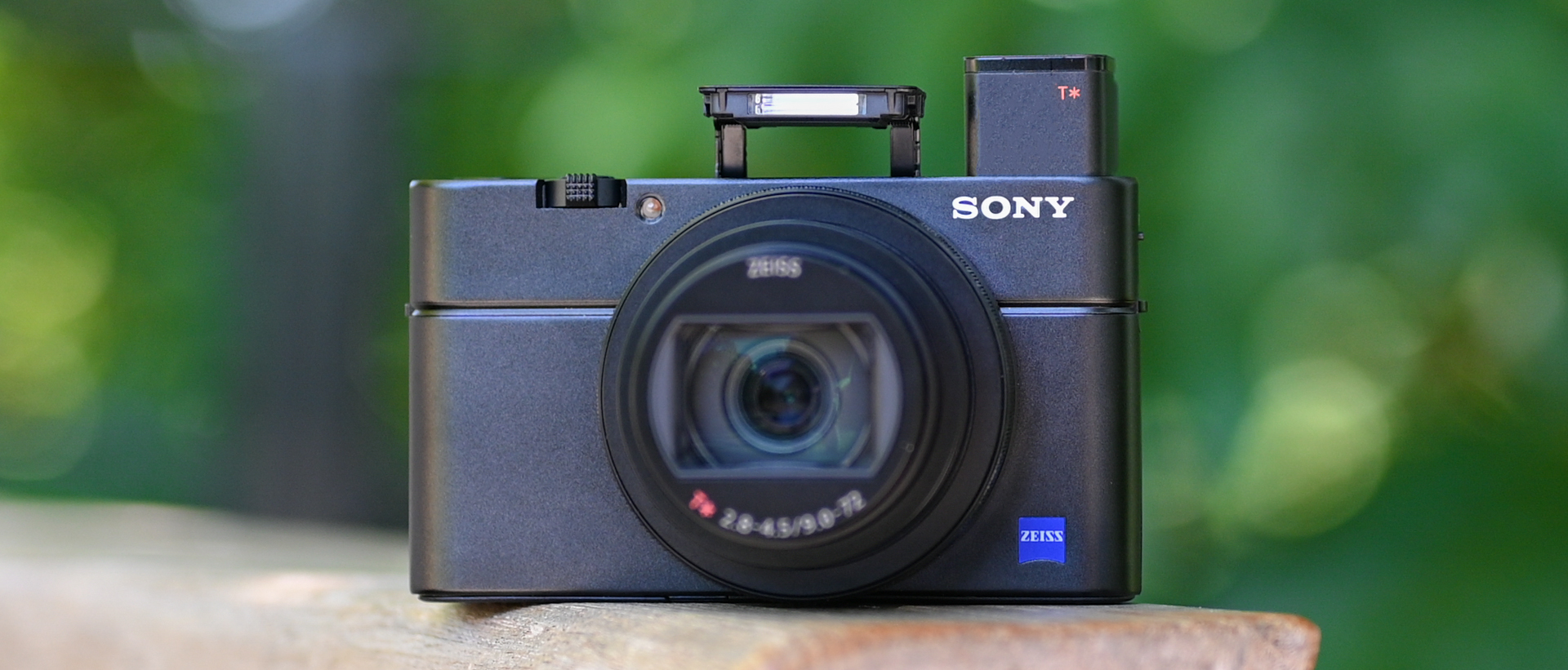TechRadar Verdict
From the absence of expected features to its lofty price tag, there's plenty to irk those drawn to the likes of the RX100 VII. And yet, with its strong image quality, detailed 4K videos and a class-leading AF performance, the latest addition to the RX100 line still manages to be one of the most capable compacts right now.
Pros
- +
Fast, sticky face detection
- +
High level of user control
- +
Impressive AF speeds and adherence
- +
Low noise at moderate ISOs
- +
Solid build and pocketable form
- +
Decent zoom range for a 1-inch sensor
Cons
- -
Lacks a built-in ND filter
- -
Touch functionality still lacking
- -
Still no in-camera raw processing
- -
Corner softness at 24mm and 200mm
- -
Expensive
- -
Average battery life
- -
Body not ergonomically designed
Why you can trust TechRadar
Editor's Note
• Original review date: October 2019
• Most recent instalment in Sony's RX100 line
• Launch price: $1,198 / £1,200 / around AU$1,725
• Official price now: $1,299 / £1,049 / AU$1,569
Update: May 2024. Starting where the RX100 VI finished, the seventh iteration of Sony’s premium compact proved impressive in our original review. We continue to rate it highly today: thanks to its solid feature set, impressive performance and pocket-friendly design, we think it remains one of the best compact cameras you can buy. One of the major drawbacks at launch was its price, and the RX100 VII is still an expensive option in 2024. Sony has only offered minor reductions to its RRP in Australia and the UK, while the price has actually increased in the US. With no sign of a direct successor, we think its popularity is likely to endure for some time, which means its price will probably do the same. Seasonal discounts are also relatively rare, with any reductions usually limited to around $100 / £100. If you want to save on the RX100 VII, your best bet is to look for a second-hand model in good condition.
It's hard to think of another camera series that has made it through to its seventh iteration, but the popularity of Sony's RX100 line goes some way to explaining how we got here.
Previous RX100 models have found their way into many photographers' hands, both as backups to interchangeable-lens models or as primary cameras for those not wishing to be burdened by a larger and heavier system. It's also one of the best travel cameras. But with asking prices now firmly into four-figure territory, some may find the more recent offerings harder to justify.
Even so, with its most recent models sporting longer lenses and inheriting key features from Sony's Alpha line of mirrorless cameras, while keeping the bodies just as portable as before, the compact camera series still appears to be moving in the right direction. So what tricks does the Sony RX100 VII pull off that we haven't seen before?
Features
- 20.1MP 1-inch stacked CMOS sensor with DRAM chip
- 20fps with AF/AE and up to 90fps without
- 4K video recording to 30p
While the first five RX100 models maintained a relatively restrained zoom range and a wide maximum aperture, the RX100 VI swapped it for a lens equivalent to 24-200mm in 35mm terms, and the RX100 VII retains this optic. The fact that Sony squeezed this lens into a body no larger than before was impressive, but the trade-off was a reduction in maximum aperture.
The lens has aspherical, advanced aspherical and extra-low dispersion glass on the inside to help keep things rosy, while Optical SteadyShot technology has also been included to keep thing stable.
Sign up for breaking news, reviews, opinion, top tech deals, and more.
It's very unusual for a camera to have the same sensor resolution throughout seven consecutive models; however, the sensors haven't been the same this whole time, and it's no surprise that the RX100 VII has been blessed with a new one, albeit one that still conforms to the same 1-inch dimensions and stacked architecture as before.




It also still has a separate DRAM chip to help crunch through all the data from the sensor at speed, and it now works with the latest version of the company's BIONZ X engine – and that partnership provides some pretty staggering burst-rate figures.
Indeed, this is one of the big shifts from the RX100 VI, and brings what Sony claims to be performance in terms of speed that's on a par with its A9 model, which is still the flagship mirrorless camera in the Alpha family.
What does that mean in figures? It means 60 autofocus and auto-exposure calculations per second, which allows for burst shooting at 20fps with autofocus and auto-exposure working throughout, without any blackout of either the viewfinder or the LCD.
While that's impressive enough, if you're willing to sacrifice adjustments to autofocus and auto-exposure and call on the Single Burst Shooting drive mode, you can shoot images at 30fps, 60fps or a ridiculous 90fps at their full resolution – the other catch is that all of these modes can only be used to capture seven frames at a time.
Sensor: 20.1MP 1-inch Exmor RS CMOS sensor
Lens: 24-200mm f/2.8-4.5 (35mm equiv.)
Screen: 3.0-inch tilting touchscreen, 921,600 dots
Viewfinder: EVF with a 2.36 million-dot resolution
Burst shooting: 20fps (up to 90fps in Single Burst Shooting mode)
Autofocus: Hybrid AF: 357 phase-detect AF points and 425 contrast-detect AF points
Video: 4K to 30p; Full HD to 120p
Connectivity: Wi-Fi and Bluetooth
Battery life: 260 (LCD), 240 (EVF)
Weight: 302g (including battery and card)
Videos are once again recorded to 4K UHD quality at a maximum 30p, with no pixel binning and the option of 4K Active SteadyShot, which is said to be eight times more effective at steadying footage than the more conventional 4K Standard SteadyShot.
If you don't need 4K recording, you can knock this down to Full HD at frame rates up to 120p. Various super-slow motion options lie on top of this, with frames rates of up to 960fps achievable, and it's also now possible to bypass the default five-minute recording restriction when shooting in 4K.
All of this is supported by a strong secondary video feature set, with a 3.5mm microphone port at the camera's side, S-Log2, S-Log3, S-Gamut3.Cine and Hybrid Log Gamma (HLG) modes, and the usual focus peaking and zebra options we've seen in many previous Sony models. The camera can also detect when you're shooting vertically, and preserves this orientation after footage has been offloaded.
The big change with video is that the RX100 VII offers Real-time Tracking and Real-time Eye AF while recording. Up until now, these have only been made available for stills in the A9 and A6400 (and now the more recent A6600), although here it's on hand for both stills and movies – and we'll be exploring exactly what these allow and how well they work in a second.
Many things, however, haven't changed from before. The electronic viewfinder still neatly hides in the top plate when it's not required, and pops up into position with a single flick of the catch at its side, and this presents a feed with the same 2.36 million dots and 0.59x magnification (in 35mm terms) as before.
The 3-inch LCD touchscreen beneath this is also the same, with 921,600 dots. Once again, this is mounted on a relatively long bracket, which allows it to swing downwards to sit at a 90-degree angle to the camera, or upwards to face the front – perfect for vloggers, which is a key audience for the RX100 VII.
The battery provides 260 frames per charge, or 240 if you tend to use the viewfinder – a modest improvement of 20 frames on the RX100 VI
The battery provides 260 frames per charge, or 240 if you tend to use the viewfinder – a modest improvement of 20 frames on the RX100 VI. These figures hardly thrill, but they're somewhat expected for a camera with such a small body (and thus, a tiny battery). In any case, as is the case on all cameras, the average user will enjoy a higher battery life than these CIPA figures suggest in real-world use because of how they are determined – and USB charging helps here too.
Next to the battery is a single slot for SDHC and SDXC cards, which are supported to the UHS-I standard. That means you can still use the faster UHS-II cards, although you won't see any performance advantage in doing so.
